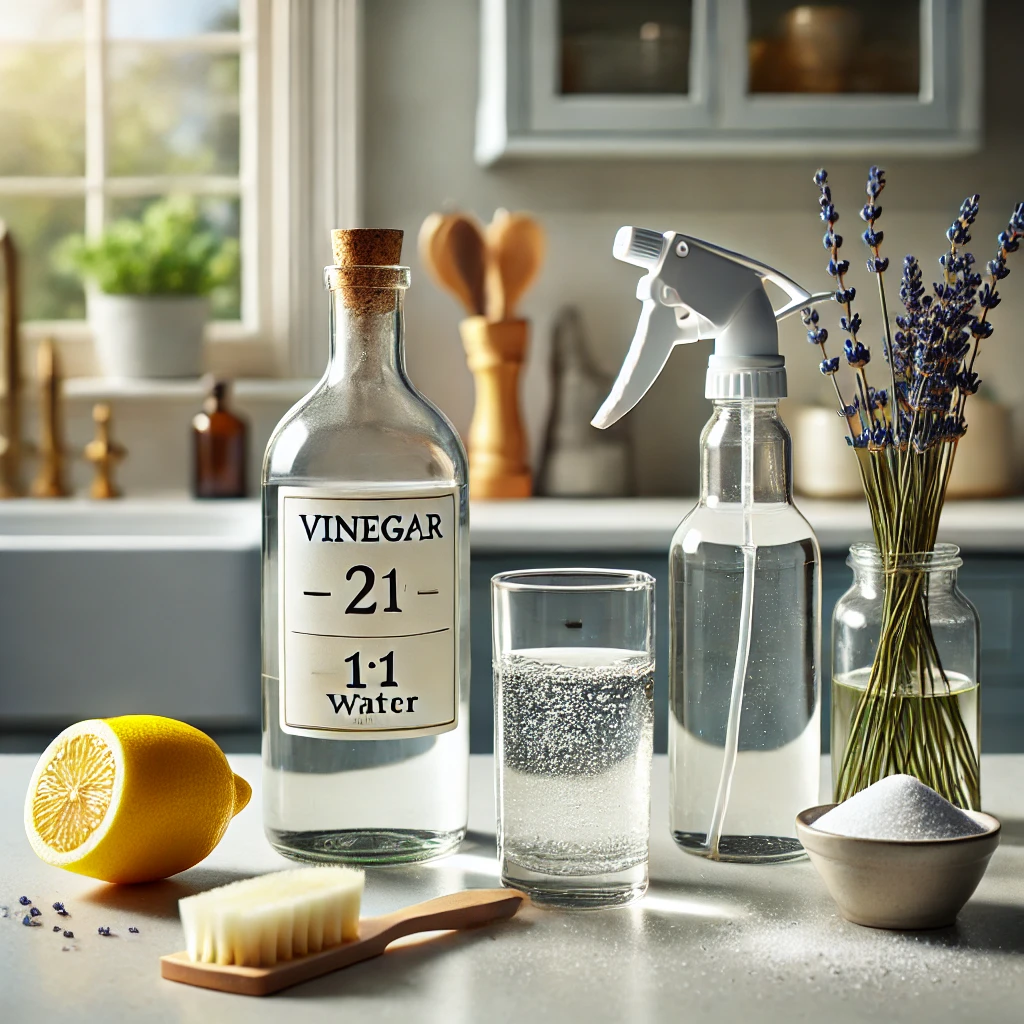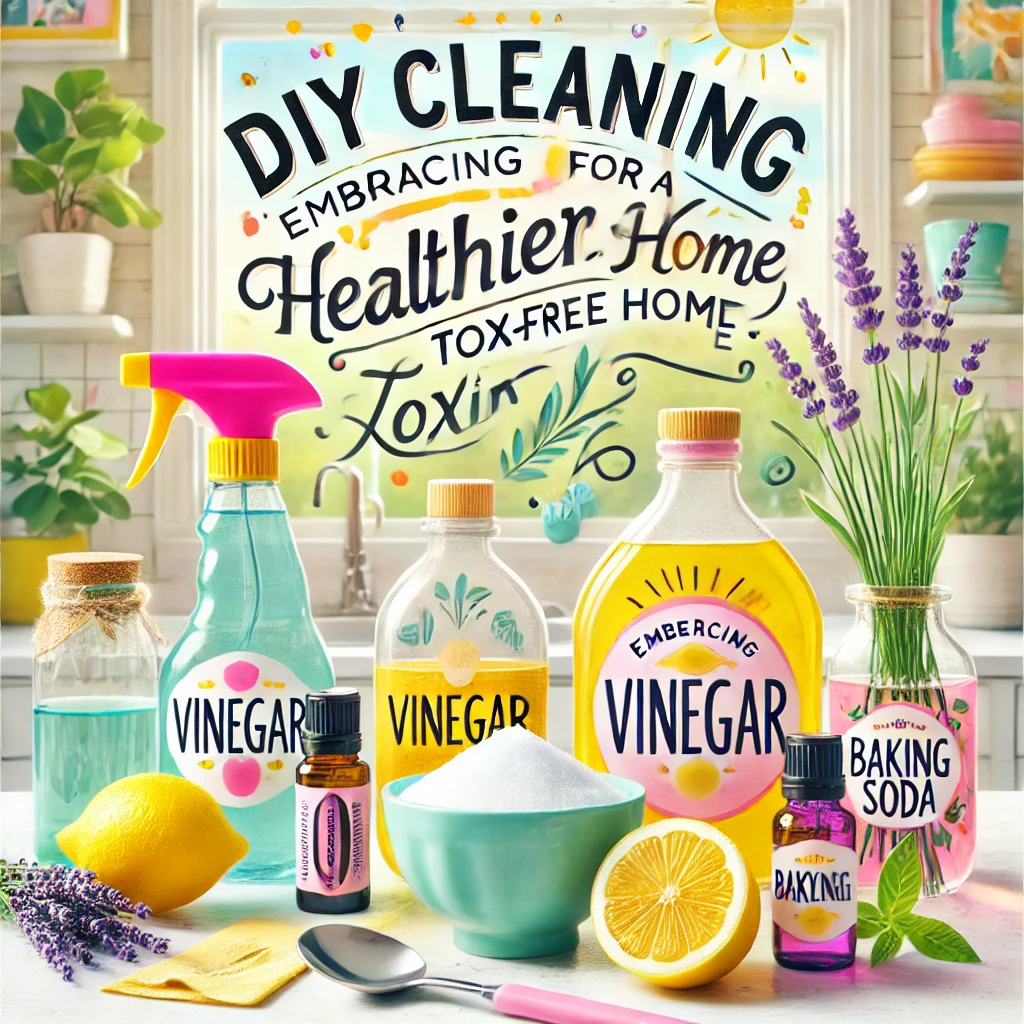How to Make a Homemade Vinegar Cleaning Solution
Keeping your home clean and fresh doesn’t have to involve harsh chemicals or expensive cleaning products. By embracing a DIY vinegar cleaning solution, you can enjoy a healthier, toxin-free home while saving money and reducing waste. This guide will walk you through the steps of creating an effective, eco-friendly cleaner using natural ingredients.
What You’ll Need
Equipment / Tools
- Spray bottle: A reusable spray bottle for easy application.
- Measuring cup: To ensure precise measurements.
- Funnel: Helps pour liquids without spilling.
- Lint-free cloths: For streak-free cleaning.
- Labels: To identify your cleaning solution.
- Pen: For labeling purposes.

Materials
- 1/2 cup white vinegar (distilled): The star ingredient for natural cleaning.
- 1/2 cup water: Dilutes the vinegar for safer use on surfaces.
- 12 to 24 drops of essential oil: Adds a pleasant scent and enhances cleaning properties.
- Baking soda: A versatile ingredient for tackling tougher stains and grime.
Step-by-Step Instructions
Step 1: Gather Your Materials
Start by assembling all your materials and tools. Having everything on hand makes the process smoother and more efficient. Choose a clean workspace, such as a kitchen counter, and lay out your equipment.
Step 2: Measure and Mix the Ingredients
Using a measuring cup, pour 1/2 cup of white vinegar and 1/2 cup of water into a mixing bowl or directly into the spray bottle if you’re using a funnel. Vinegar is a natural disinfectant that effectively removes dirt, grease, and bacteria. Mixing it with water ensures it’s safe to use on most surfaces.
Step 3: Add Essential Oils
Add 12 to 24 drops of your preferred essential oil to the vinegar-water mixture. Popular choices include lavender, tea tree, lemon, or eucalyptus oils. These not only mask the strong smell of vinegar but also offer additional antimicrobial and deodorizing properties.
Step 4: Pour the Solution into the Spray Bottle
Place the funnel in the spray bottle’s opening and carefully pour in the prepared solution. This step helps prevent spills and keeps your workspace clean. Secure the spray bottle’s nozzle tightly once filled.
Step 5: Label Your Bottle
Use a label and pen to clearly mark your spray bottle. Write down the contents and the date you made the solution. This ensures you know what’s inside and when it’s time to make a fresh batch.
Step 6: Prepare for Specific Tasks (Optional)
For tougher cleaning tasks, baking soda can be a helpful addition. Sprinkle a small amount of baking soda directly onto the surface before spraying with your vinegar solution. The combination creates a mild fizzing reaction that helps break down stubborn grime and stains.
Tips for Using Your Homemade Cleaning Solution
- Test Before Use: Always test your vinegar solution on a small, inconspicuous area before applying it to larger surfaces. This ensures it won’t damage or discolor certain materials.
- Avoid Sensitive Surfaces: Vinegar is acidic and can damage natural stone surfaces like granite, marble, or limestone. Use alternative cleaners for these areas.
- Streak-Free Windows and Mirrors: For sparkling glass, spray the solution on the surface and wipe with a lint-free cloth.
- Deodorize Fabrics: Lightly mist upholstery or carpets to neutralize odors, ensuring the material won’t stain.
- Eliminate Kitchen Odors: Spray the solution inside the fridge or microwave, then wipe clean for a fresh-smelling kitchen.
Why Choose Homemade Cleaning Solutions?
- Healthier Living: Conventional cleaning products often contain chemicals that can cause respiratory or skin irritation. Vinegar is a safer, natural alternative.
- Cost-Effective: With simple ingredients you likely already have at home, making your own cleaner is much cheaper than store-bought options.
- Eco-Friendly: Reduce plastic waste by reusing bottles and choosing biodegradable ingredients.
- Customizable: Tailor your cleaner with essential oils to suit your preferences or target specific cleaning challenges.
Conclusion
Making a homemade vinegar cleaning solution is simple, effective, and rewarding. By using natural ingredients like vinegar, water, and essential oils, you can create a versatile cleaner that’s safe for your family and the environment. With this DIY approach, you’re not only reducing toxins in your home but also contributing to a more sustainable lifestyle. So grab your spray bottle and get started on your journey to a cleaner, greener home!
